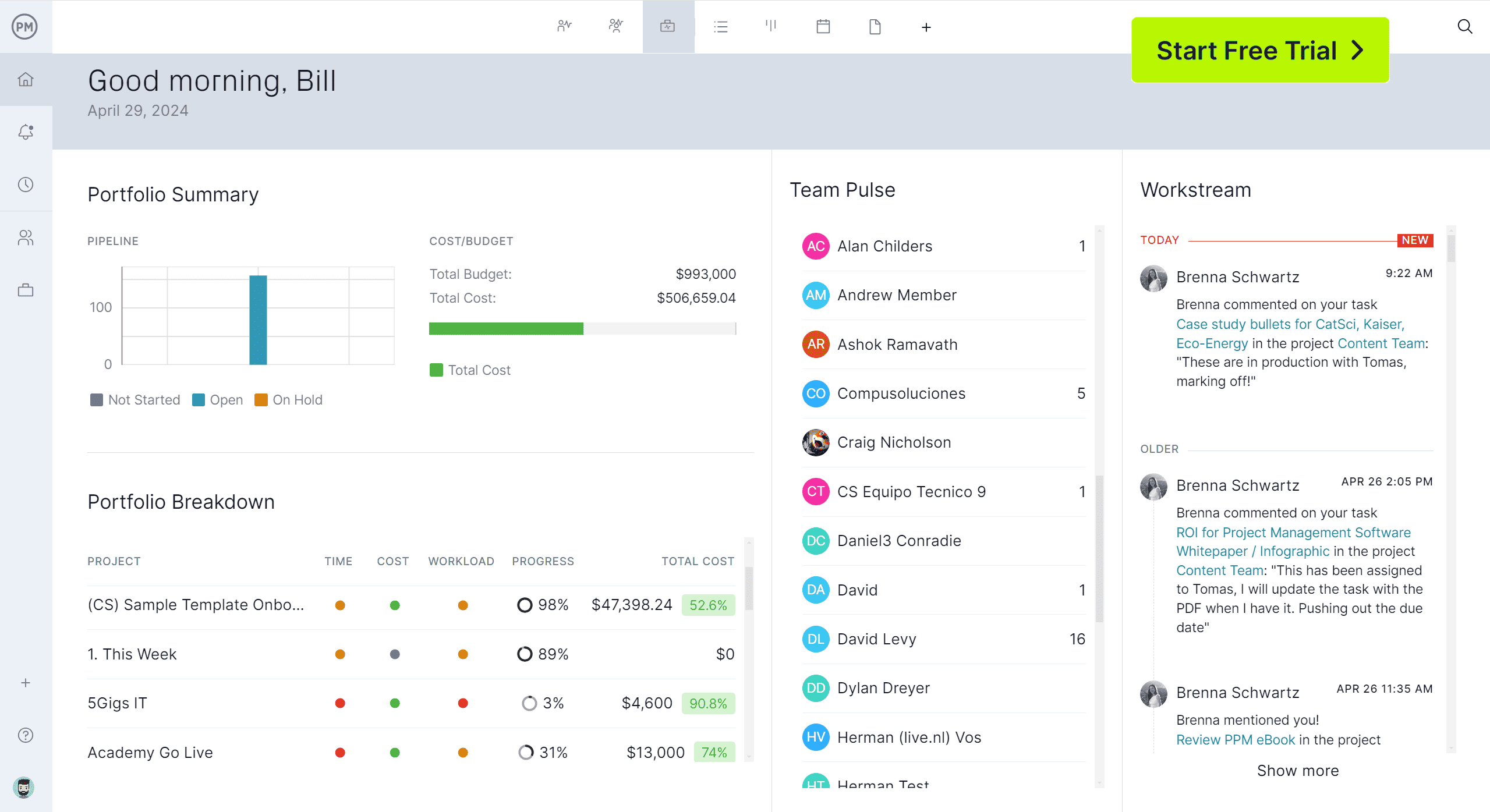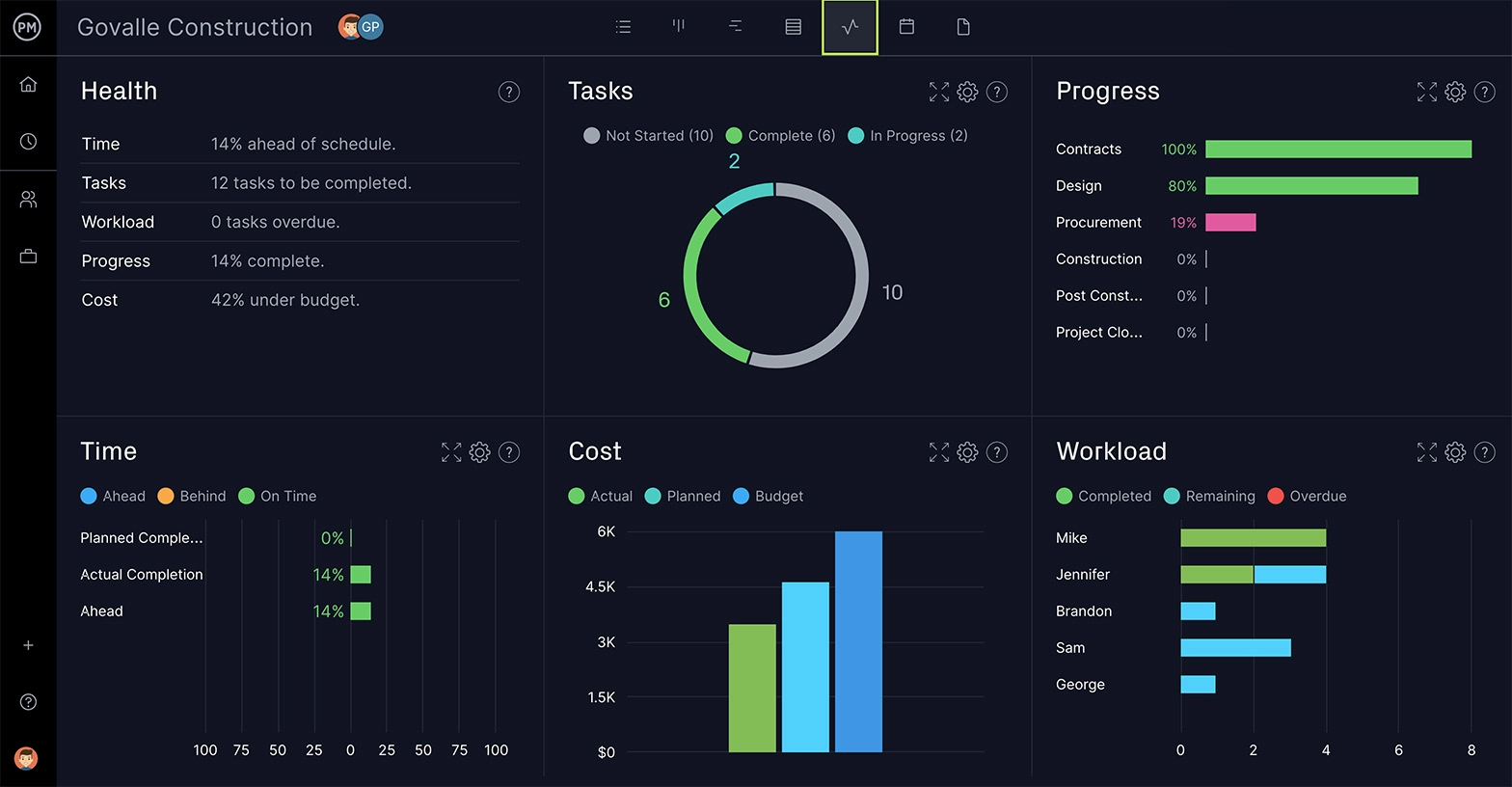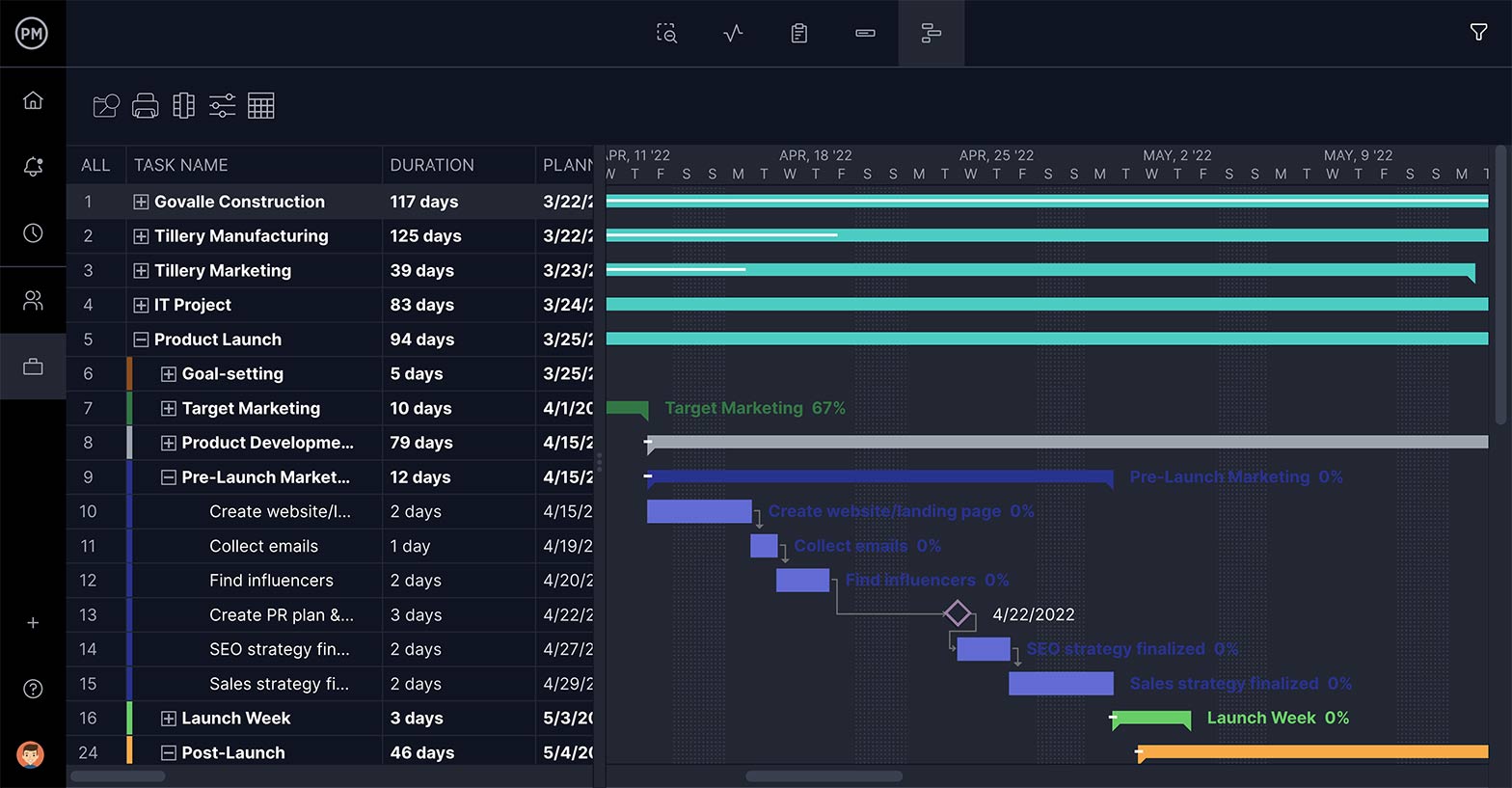The project manager is on the ground, running the team and keeping the daily operations of a project running smoothly. But who looks after the project manager? In project management, that position is called a project director.
Project management tends to be a hierarchical methodology that has numerous tiers of command. If you’re looking for a job or need to fill an open position, you’re in luck. The below job descriptions are very precise. Let’s take a look at a project director and learn what they do.
What Is a Project Director?
A project director is a person responsible for leading a team of project managers, which can also include contractors, sub-contractors, software developers, web developers, graphic designers, testers, network engineers and other staff that are essential to the project. They work in industries as varied as construction to IT.
Project directors are responsible for the successful conclusion of the project by providing leadership, strategically managing risk, monitoring finances and making sure that each phase of the project starts and ends on schedule. Project directors work within the project’s scope of work (SOW) or function specification documents (FSD).
Project directors oversee more than one project manager because they’re often responsible for overseeing multiple projects. Their oversight is at the strategic level, managing shared resources and finances to make sure each project is progressing on time and within budget. Their leadership position requires that they’re updated regularly so they can make needed adjustments to staffing or finance to align with the broader outcome goals.
The project director is responsible for critical decision-making, such as adjusting the budget and adding resources related to the project governance processes. The project managers report to the project director regularly and the project director then reports to the senior management team. You can find project directors in the office, at the factory or in the field. They tend to travel often to various project-related sites to check on the status of the operation.
Project Management Software for Project Directors
To stay on top of one or more projects, project directors need project management software. ProjectManager delivers real-time data to help project directors make more insightful decisions.
- Generate reports on project and portfolio status, costs, tasks and much more
- Plan programs and balance resources across a portfolio
- Keep stakeholders informed via free guest licenses and tailored dashboards

What Does a Project Director Do?
As noted, the project director comes up with the strategic and operational plans for each of the projects that they’re overseeing. One of the things that a project director does is monitor and report on project milestones, such as financial and programmatic ones.
They’re also responsible for keeping the internal and external stakeholders updated on progress and any deviations from the plans as well as project risks. Project directors work closely with the project managers for each of the projects they oversee and discuss what the projects might need to remain on track.
Project directors develop and test various tactics that can help the projects they manage, from training to delivery mechanisms and public and private sector engagement. It’s part of their job to be innovative and integrate those solutions to better project outcomes.
Main Duties and Responsibilities of a Project Director
We’ve been taking a high-level look at what a project director does, such as the overall management of the project. But there are more than the important tasks of project implementation, financial and administrative oversight, monitoring, reporting and evaluating the project. Here’s a list of the main duties and responsibilities of a project director.
- Coordinate project managers to make sure work is being done properly
- Develop a timeline that captures milestones for projects
- Create budget and monitor finances to ensure you keep to the budget
- Recommend changes to keep projects on track
- Make alternative plans if initial project planning is inadequate
- Present to investors, business partners and company executives
- Review, approve or deny proposals
- Contract with outside agencies as needed
- Manage resources
- Track planned effort against actual effort and make changes as needed
Project Director Skills & Education
Project directors need to have strong skills and a fair amount of education and experience to be considered for a job with so much responsibility. Top of the line is leadership skills. Next to upper management, the project director is the most powerful position on a project and is responsible for its success or failure.
To motivate the project managers and project teams, project directors must marry their strong leadership skills with management skills to execute the various initiatives related to the project.
In today’s digital world, a project director cannot work as efficiently as needed without having a broad knowledge of computer operating systems. This includes project management software that helps plan, monitor and report on projects.
Naturally, persistence and determination are required to see multiple projects through their phases and keep them on schedule and within budget. It can be a very frustrating job and the buck stops with the project director. They need to be able to use initiative to implement ideas.
Any position of this type requires a thorough person who doesn’t do a superficial job. Though they look over several different projects at a high level, they still have to pay attention to detail to manage projects effectively. That includes a good deal of math and excellent verbal and written communication skills.
Regarding education, most positions require at least a bachelor’s degree in business, economics or a related field. Having an advanced degree or certification in project management isn’t necessary but is more often than not what will differentiate you from other candidates in a crowded, competitive field.
Project Director Job Description Sample
Now that we’ve defined what a project director is, what they do and how they differ from project managers, you have the information you need to become a project director or start looking for one in your organization. Below is a project director job description sample. Simply copy and paste it to use in your job listings.
Summary
Seeking a project director for our company to provide innovative approaches to management and coordinate with partners, executives and stakeholders. Will supervise diverse teams across various projects while overseeing project implementation, financial and administrative oversight, monitoring and reporting, as well as continuous evaluation of operations.
Duties and Responsibilities
- Provides strategic leadership and technical, operational, financial and managerial leadership for successful implementation of projects
- Makes sure projects are aligned with overall strategic goals and objectives of the organization and, if not, revises plan to make them so
- Oversees all project implementation related to project management, including monitoring and reporting, financials transactions, execution of project plans and performance
- Selects and manages the training of project teams, assigning clear roles and responsibilities, providing effective supervision and managing performance
- Ensures projects deliver specified results and meet quality expectations
- Creates and manages project budgets
- Regularly updates clients, stakeholders and executives with reports on the progress and performance of projects
- Identify and mitigate project risk to avoid delays and cost overruns
- Follow all regulations related to projects and ensure they’re in compliance
- Guides individual project managers across a portfolio of projects
Requirements and Qualifications
- Advanced degree preferred in a relevant field from an accredited university
- Project management certification preferred
- At least 10 years of experience in a leadership position managing more than one project
- Experience managing, designing, implementing and evaluating multiple projects
- Technical proficiency with industry software and project management software
- Demonstrated interpersonal, management and communication skills
- Strong oral and written skills
What Is a Certified Project Director?
A certified project director (CPD) has obtained a certification recognizing their advanced knowledge, skills and experience in leading and managing multiple, complex projects, programs or portfolios of work. It showcases a high competency level in project management, usually going beyond the skills assessed in certifications for project managers only focusing on one project.
This role exhibits leadership capabilities and a comprehensive skill set in various aspects of project management. A CPD certification involves a rigorous assessment process, such as examinations, interviews and the evaluation of professional experience.
Various organizations offer these credentials, including the Global Association for Quality Management (GAQM), the International Project Management Association (IPMA) and the Center for Project Innovation.
Project Director Salary
The salary for a project director can vary significantly depending on several factors, including experience level, industry, company size, company type, location and education.
For example, according to Glassdoor, the annual pay for a project director in the United States ranges from $106,000-$193,000 per year, with the median annual salary falling at $141,000. Keep in mind that these figures are only for the United States, and salaries for project directors can vary drastically from country to country.
Project Director vs. Project Manager
We’ve mentioned a bit about the relationship between a project director and a project manager, but it’s worth going into more detail as they might seem similar but are different positions. As the project director is a leadership role, so is the project manager. The difference is what they’re leading.
The project director works at a strategic and tactical level. They’re responsible for understanding the broader context of the organization and the changes occurring in the program or portfolio of projects they’re overseeing. They strive to align each project’s approach and impact with the organization’s larger goals and objectives.
Project directors tend to have a lot of work experience and need little direction and supervision. They are leaders, giving direction and guidance to the project managers under them and sometimes the project teams as well.
A project manager, as the name implies, is more of a management position. The project manager implements the plans and agreed-upon approach for the project. Gantt charts are the stock and trade of most project managers and they use them to organize project tasks and resources across a project timeline. These plans are open to review by the project director and executive team.
Sample Project Director Interview Questions
To better prepare for a project director interview, explore these questions and answers below.
Question: How do you ensure that individual projects within a program or portfolio contribute to the overarching strategic goals?
Answer: I establish clear connections between project charters and strategic objectives by working with sponsors to define measurable outcomes that directly support the business strategy. Regular portfolio reviews, where we assess project alignment and contribution, are also critical, alongside cross-functional communication to ensure everyone understands the strategic importance of their work.
Question: How do you handle conflict within project teams or between project managers and stakeholders?
Answer: My approach is to first understand the root cause of the conflict by actively listening to all parties involved. I then facilitate open and honest communication to find common ground and mutually agreeable solutions. If needed, I can mediate and guide the discussion towards a resolution that aligns with project goals.
Question: How do you ensure effective risk management across a portfolio of projects?
Answer: I establish a consistent risk management framework across all projects, including standardized risk identification, assessment and mitigation processes. I also review portfolio risk reviews regularly to identify and address systemic risks and allocate resources effectively to high-priority threats and opportunities.
Question: How do you communicate project status, risks and issues to executive leadership?
Answer: I know that fast-paced environments require clear and timely communication with executives. I tailor my communication to the audience, providing concise and high-level summaries. I focus on key metrics, potential impacts to strategic goals and proposed solutions or escalations. Visual aids and data-driven reports can also convey information and facilitate informed decision-making.
ProjectManager Is a Great Tool for Project Directors
Whether you’re working towards being a project director or you’re in the market to hire one, you’ll need the right project management tools to do the job well. ProjectManager is online project management software that helps project directors plan, monitor and report on one project, a program or a portfolio of projects. Access to real-time data allows you to respond to the project as it is, not how it was.
Track All of Your Projects on a Roadmap
Manage all your projects on the roadmap view of our Gantt chart. You can filter data to see only what you want to see, whether that’s the scheduled start or finish, planned effort, actual effort and more. This high-level view helps project directors allocate resources across their projects. By setting a baseline for each project, you can also monitor the project variance to make sure you’re on track.

Monitor Projects With Real-Time Portfolio Dashboard
Another tool for project directors is the real-time portfolio dashboard, which gives you a high-level view of all your projects. The dashboard requires no setup, as with inferior products, and automatically collects and calculates six project metrics: health, time, cost, workload, tasks and progress. It’s like getting a portfolio status whenever you need it with real-time data to make better decisions.

Our software also gives you a portfolio projects view which shows a list of all the projects you’re managing. You can get to any of the projects by clicking on them on this page. There’s project information and more data you can see at a glance. For resources, there’s a workload page that lists all the users in your account and shows their allocation, vacation time and more, so you can balance the workload and have more productive projects.
Related Content
- 10 Key Project Roles & Their Responsibilities
- Top 30 Project Management Skills
- Top 10 Project Management Qualifications
- Best 12 Project Management Certifications
ProjectManager is award-winning software that gives project directors the tools they need to strategically manage projects. We have features that help them plan, monitor and report across multiple projects, manage resources and all on a collaborative platform that connects teams whether they’re in different departments or different parts of the world. Join the teams at organizations such as NASA, Siemens and Nestle who are delivering success with our tool. Get started with Project Manager today for free.


